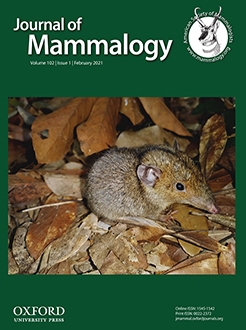Geomagnetic sensitivity is present in a variety of vertebrates, but only recently has attention focused on subterranean mammals. We report the potential use of a magnetic compass in wild Damaraland mole-rats (Fukomys damarensis) during dispersal at two sites in the Kalahari region of South Africa. When the distance traveled was greater than 250 m, males and females dispersed in opposite directions and females preferentially chose a predominantly northeastern direction. This directional choice likely is due to the differing dispersal tactics between sexes. This evidence suggests that Damaraland mole-rats employ a magnetic compass during aboveground dispersal to assist in locating mates or a new territory. This study provides evidence to show how magnetic compass use could be useful in dispersal, an important ecological process for mammals.
How to translate text using browser tools
22 January 2021
Potential use of a magnetic compass during long-distance dispersal in a subterranean rodent
Kyle T. Finn
ACCESS THE FULL ARTICLE

Journal of Mammalogy
Vol. 102 • No. 1
February 2021
Vol. 102 • No. 1
February 2021
Damaraland mole-rat
dispersal
Fukomys damarensis
magnetic compass
magnetoreception
navigation
subterranean rodent




